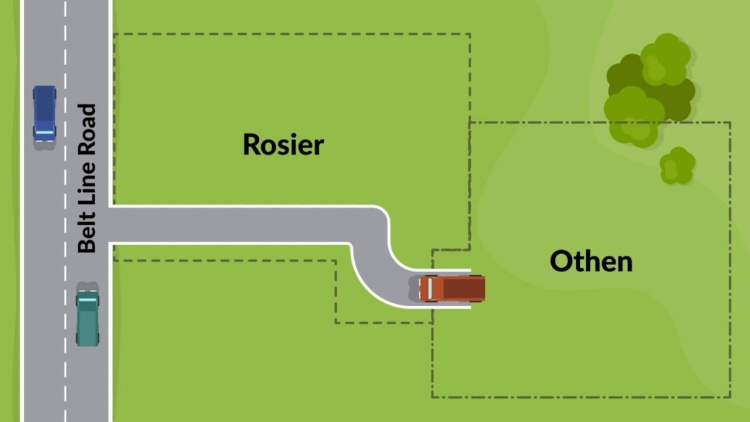Othen v. Rosier
Texas Supreme Court
226 S.W.2d 622 (1950)
- Written by Dennis Chong, JD
Facts
Hill owned a large tract of land. On August 26, 1896, he conveyed 100 acres of that land, which eventually reached Rosier (defendants) in 1924. In 1897, Hill conveyed another 60-acre tract, which eventually reached Othen (plaintiff) in 1904. In 1913, Othen acquired another 53 acres of Hill’s land, and in 1924 Rosier acquired another 16.31 acres of the land. Othen’s land did not connect to a public road, so in order to access Belt Line Road at the western border of Rosier’s property, Othen would follow a fenced-in path that ran through Rosier’s property. Eventually, Rosier was concerned that certain water patterns threatened to cause damage to his property, so he constructed a levee to channel the flow. The levee blocked half of the road used by Othen and rendered the path muddy and unusable. Othen sued Rosier, alleging that Rosier had blocked his right of ingress and egress to and from his farm. Othen asked the court to order Rosier to remove the levee and enjoin Rosier from further depriving Othen of use of the path. The trial court found that Othen had an easement of necessity across Rosier’s land and entered the requested injunction. The court of civil appeals reversed the trial court, and Othen appealed.
Rule of Law
Issue
Holding and Reasoning (Brewster, J.)
What to do next…
Here's why 899,000 law students have relied on our case briefs:
- Written by law professors and practitioners, not other law students. 47,000 briefs, keyed to 994 casebooks. Top-notch customer support.
- The right amount of information, includes the facts, issues, rule of law, holding and reasoning, and any concurrences and dissents.
- Access in your classes, works on your mobile and tablet. Massive library of related video lessons and high quality multiple-choice questions.
- Easy to use, uniform format for every case brief. Written in plain English, not in legalese. Our briefs summarize and simplify; they don’t just repeat the court’s language.





